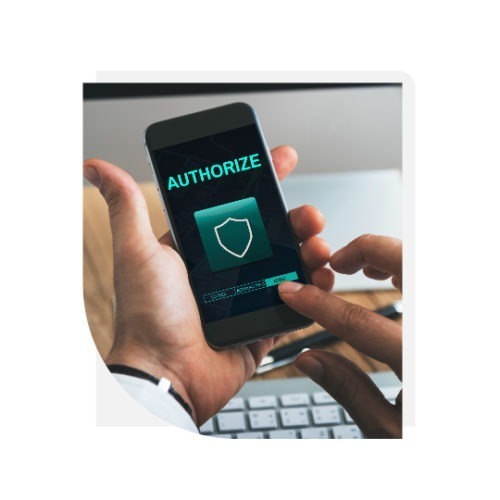Know the Differences between KYC and AML
There’s a massive surge in AML compliance due to the fast-evolving online space and increased money laundering threats. The Fintech industry is also growing and needs robust AML compliance programs. KYC is an integral part of the AML compliance process, but there are some key differences between KYC and AML. Let’s discuss how the two approaches differ.
What is KYC?
KYC is an acronym for ‘Know Your Customer’ in which organizations collect relevant data about prospective customers, establish their identity, and create a risk profile. They verify the customers’ identity before opening a bank account or indulging in any financial activity. The regulated firms have to strictly follow the AML regulations, protect their business, and guard their reputation by doing business only with legitimate organizations and verified individuals. The KYC will help them identify any suspicious accounts with a high probability of being a money-laundering entity.
What is AML?
AML is an abbreviation for Anti-Money Laundering that encompasses various rules and regulations imposed by the government that regulated firms should follow in dealing with money laundering. The AML laws help identify financial crimes and prevent money laundering. With the help of AML laws, governments can stop black money from entering into the legal systems. They help to avoid funding of criminal and terrorist activities. Financial institutions must follow the sanctions screening process, a stringent AML control that helps detect any suspicious economic activity and provides timely information to prevent financial fraud.
Sanction screening is a crucial step in the KYC process and allows to detection of financial frauds with great ease. The sanctions are imposed to coerce a regime or individuals within a regime and force them to change their behaviour by increasing the cost on them to change their behaviour and not repeat the undesired or offending behaviour. The AML policy is a part of an elaborate AML compliance program that enables the regulated entities to comply with the local AML rules and regulations.
How do KYC and AML procedures differ?

Key differences between KYC and AML
KYC
AML
Standard components of the AML Compliance Process
- KYC Compliance
- AML guidelines
- AML policies
- Continuous risk assessment and monitoring services
- AML Training
- Internal Controls and Audits
- Escalation Procedures
AML Compliance
The AML compliance process requires an in-depth analysis of large amounts of data and the right tools and core expertise in AML compliance services to detect financial frauds and arrest criminals. Automation with the help of the right AML software streamlines the AML process and makes it cost-efficient. Automation eliminates the possibility of human errors leading to high accuracy and increased efficiency. The compliance process is speed up, and compliance with new regulations is possible without any delays. The software solution empowers businesses with advanced technology to comply with the AML, CFT, and KYC requirements. FIs can develop the proper AML compliance framework and make AML training necessary- they need to train the employees for risk profiling, identifying any suspicious accounts, and minimizing false positives. The AML software is a cost-efficient medium that helps organizations be completely compliant with the AML, CFT, and KYC requirements.
What is the role of AML Software?
The AML software is instrumental in keeping the AML compliance framework and verifying customer information. It evaluates the customers’ risk profiles and screens against a sanction list. It extracts further details on the PEPs. Counter-Terrorist Financing and Sanctions Module (AML rules) must be followed in the UAE. All the financial institutions must establish AML training programs for the CFT and AML obligations. Law No. 4/2002 Anti-Money Laundering Law, Law No. 1/2004 the Counter-Terrorism Law and Counter-Terrorist Financing and Sanctions Module (AML Rules) are the local AML laws and regulations in the United Arab Emirates. Law No. 1/ 2004 states that people engaged in terrorist financing face imprisonment and death sentences. The AML software helps in KYC and transaction monitoring and creates and executes an effective AML compliance strategy. The software sends real-time alerts to the MLROs- Money Laundering Reporting Officers.
Conclusion
AML UAE has served organizations in different industry verticals to keep pace with the CFT/ AML rules and regulations and prevent money laundering. So, the financial institutions in the UAE should comply with the AML/ CFT programs, detect suspicious financial activities, and deter money laundering. They can use the services of a reliable AML compliance firm that will offer an array of AML compliance services. It will also help choose the right AML software that meets the unique business requirements and help businesses to stay AML compliant at all times.
Our recent blogs
side bar form
Add a comment
Share via :
FAQs
KYC is the process of identifying and verifying your customers. Money laundering is a medium of conducting financial crime. The process of KYC helps reduce the chances of money laundering because customers are identified, their relation with any terrorism or financial fraud is monitored, and their transactions are reviewed.
Knowing your customers is essential to check if they are related to financial fraud or money laundering. With KYC, you know your customers’ identity, beneficial owners, any relation with Sanction lists or terrorist organizations, or any other information that is useful to eliminate risks of money laundering.
About the Author
Pathik Shah
FCA, CAMS, CISA, CS, DISA (ICAI), FAFP (ICAI)
Pathik is a Chartered Accountant with more than 25 years of experience in compliance management, Anti-Money Laundering, tax consultancy, risk management, accounting, system audits, IT consultancy, and digital marketing.
He has extensive knowledge of local and international Anti-Money Laundering rules and regulations. He helps companies with end-to-end AML compliance services, from understanding the AML business-specific risk to implementing the robust AML Compliance framework.




